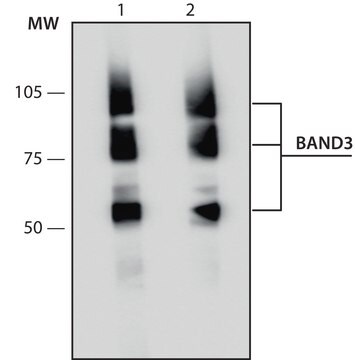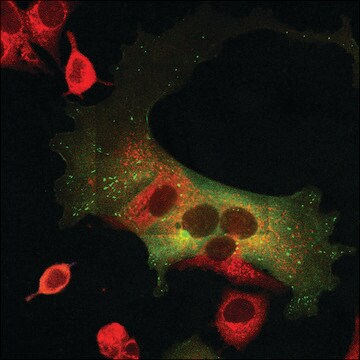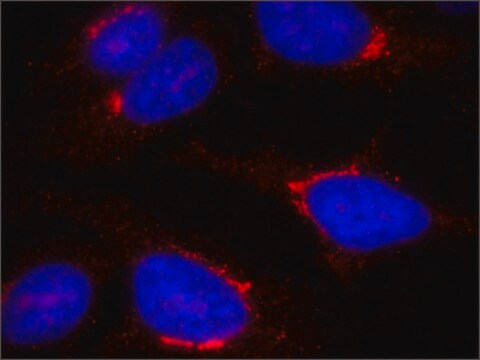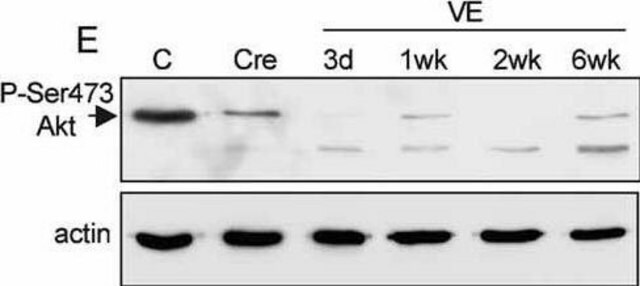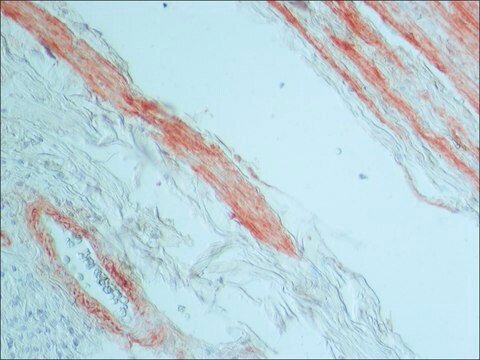B9277
Monoclonal Anti-Band 3 antibody produced in mouse
clone BIII-136, ascites fluid
About This Item
Polecane produkty
pochodzenie biologiczne
mouse
Poziom jakości
białko sprzężone
unconjugated
forma przeciwciała
ascites fluid
rodzaj przeciwciała
primary antibodies
klon
BIII-136, monoclonal
zawiera
15 mM sodium azide
reaktywność gatunkowa
human
metody
immunoprecipitation (IP): suitable using human erythrocytes
indirect immunofluorescence: suitable using methanol-fixed human erythrocytes
western blot: 1:5,000 using human erythrocytes
izotyp
IgG2a
Warunki transportu
dry ice
temp. przechowywania
−20°C
docelowa modyfikacja potranslacyjna
unmodified
informacje o genach
human ... SLC4A1(6521)
Powiązane kategorie
Opis ogólny
Monoclonal Anti-Band 3 antibody detects Band 3 protein (90-100 kD) and several lower molecular mass peptides migrating in SDS-PAGE gels in the regions of 60, 40 and 20 kD. The product specifically binds to the cytoplasmic amino-terminal protein of band 3 (the epitope is approx. 20 kD from the N-terminal end). As the epitope is not located at the erythrocyte surface, the antibody product does not agglutinate red blood cells. Furthermore, its cell surface binding cannot be detected by an indirect agglutination assay. The antibody does not localize Band 3 from horse, bovine, pig, guinea pig, dog or mouse erythrocytes, nor does it localize Band 3 from nonerythroid human fibroblast extract.
Specyficzność
Immunogen
Zastosowanie
Działania biochem./fizjol.
Oświadczenie o zrzeczeniu się odpowiedzialności
Not finding the right product?
Try our Narzędzie selektora produktów.
Kod klasy składowania
10 - Combustible liquids
Klasa zagrożenia wodnego (WGK)
nwg
Temperatura zapłonu (°F)
Not applicable
Temperatura zapłonu (°C)
Not applicable
Certyfikaty analizy (CoA)
Poszukaj Certyfikaty analizy (CoA), wpisując numer partii/serii produktów. Numery serii i partii można znaleźć na etykiecie produktu po słowach „seria” lub „partia”.
Masz już ten produkt?
Dokumenty związane z niedawno zakupionymi produktami zostały zamieszczone w Bibliotece dokumentów.
Nasz zespół naukowców ma doświadczenie we wszystkich obszarach badań, w tym w naukach przyrodniczych, materiałoznawstwie, syntezie chemicznej, chromatografii, analityce i wielu innych dziedzinach.
Skontaktuj się z zespołem ds. pomocy technicznej